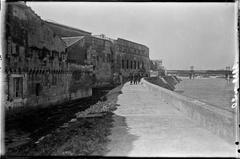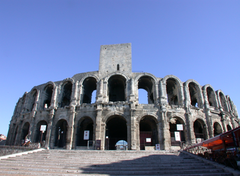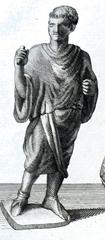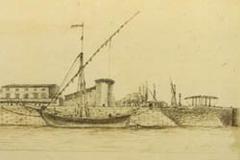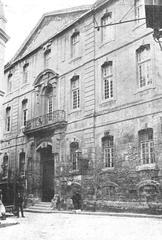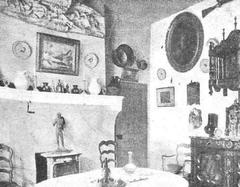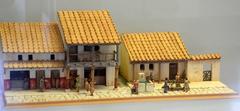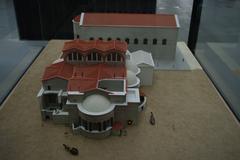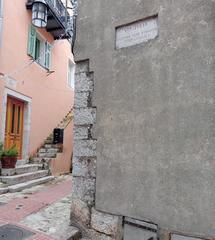
Comprehensive Guide to Visiting Musée Réattu, Arles, France
Date: 24/07/2024
Introduction
Nestled in the heart of Arles, France, the Musée Réattu stands as a beacon of artistic and historical significance. This museum, housed in a building with a storied past, offers visitors a unique opportunity to explore a blend of medieval architecture and contemporary art. Originally a bastion for the Knights of the Order of Malta, the structure was later transformed by the Arles-born painter Jacques Réattu into a repository of his works and a hub for artistic creation (seeprovence.com). Over the years, the museum has expanded its collection to include contemporary art, making it a dynamic space that attracts art enthusiasts from around the world. This comprehensive guide will provide you with essential information, from the museum’s rich history to practical visiting tips, ensuring a memorable experience at this iconic site.
Table of Contents
- Introduction
- History and Significance
- Visitor Information
- Nearby Attractions
- Travel Tips
- FAQ
- Conclusion
History and Significance
Origins and Early History
The Musée Réattu is housed in a building with a rich and varied history. Originally, the structure served as a bastion for the Knights of the Order of Malta. This medieval order, known for its military and hospitaller roles during the Crusades, left a lasting imprint on the building. Emblems and hidden passageways from their tenure remain, adding an air of mystery and historical depth to the museum (seeprovence.com).
Transformation by Jacques Réattu
After the period of the Knights of Malta, the building underwent significant changes. It was purchased by Jacques Réattu, a painter born in Arles in 1760. Réattu acquired the building and surrounding lots over several years, transforming it into his studio and a repository for his growing collection of artworks. This period marked a significant shift in the building’s purpose, from a military bastion to a center of artistic creation (seeprovence.com).
Artistic Contributions of Jacques Réattu
Jacques Réattu’s influence on the museum is profound. He created many of his works within its walls, including the unfinished piece “Death of Alcibiades.” This particular work offers a unique glimpse into Réattu’s artistic process, showcasing the outlines and techniques he used. The museum’s collection includes a variety of his works, reflecting his significant contribution to the art world and the cultural heritage of Arles (seeprovence.com).
Expansion and Modernization
In the 20th century, the museum expanded its collection to include contemporary art. This expansion was part of a broader effort to modernize the museum and attract a wider audience. Today, the Musée Réattu boasts a diverse collection that includes works by Picasso, photographers, and sculptors. This blend of contemporary and classic art creates an engaging and dynamic experience for visitors (seeprovence.com).
Architectural Significance
The building itself is a significant part of the museum’s appeal. Its high-ceilinged rooms and courtyards exude an air of secrecy and historical intrigue. Overhanging gargoyles serve as a foreboding reminder of the building’s past, adding to its architectural charm. The structure’s historical layers, from its medieval origins to its transformation into an art studio, make it a fascinating subject of study in its own right (seeprovence.com).
Cultural Impact on Arles
The Musée Réattu plays a crucial role in the cultural landscape of Arles. It not only preserves the legacy of Jacques Réattu but also serves as a hub for contemporary art. The museum’s exhibitions and collections contribute to Arles’ reputation as a center for artistic innovation and historical preservation. This dual focus on history and modernity makes the museum a vital part of the city’s cultural identity (seeprovence.com).
Visitor Information
Practical Information
The Musée Réattu is accessible to a wide range of visitors, with an entry fee of €8. It is also included in the Avantage and Liberté passes available from the tourist office. For those interested in exploring more of Arles’ artistic heritage, a combination ticket including the Musée Réattu and The Van Gogh Foundation is available for €12. The museum is closed every Monday and on specific holidays, including January 1st, May 1st, November 1st, and December 25th. Opening times vary by season, with extended hours from March to October (seeprovence.com).
Photography and Accessibility
Photography is allowed within the museum, provided that no flash is used. This policy allows visitors to capture their experience and share it with others, further promoting the museum’s offerings. The museum’s accessibility features ensure that it can be enjoyed by all visitors, making it a welcoming destination for art enthusiasts and history buffs alike (seeprovence.com).
Nearby Attractions
While visiting the Musée Réattu, take the time to explore other historical sites and attractions in Arles. The Roman amphitheater, the ancient theater, and the Van Gogh Foundation are all within walking distance and offer a deeper dive into the rich cultural tapestry of the city.
Travel Tips
Arles is best explored on foot, so wear comfortable shoes. The city’s narrow streets and historical sites are best enjoyed at a leisurely pace. Consider visiting during the off-peak seasons to avoid large crowds and enjoy a more intimate experience with the city’s attractions.
FAQ
What are the Musée Réattu visiting hours?
The museum’s hours vary by season. From March to October, it is open from 10 AM to 6 PM. From November to February, it is open from 10 AM to 5 PM. The museum is closed on Mondays and specific holidays.
How much are tickets to Musée Réattu?
General admission is €8. Combination tickets with The Van Gogh Foundation are available for €12.
Is photography allowed within the museum?
Yes, photography is allowed, but no flash is permitted.
Conclusion
The Musée Réattu stands as a testament to the rich cultural and artistic heritage of Arles. Its historical significance, combined with its diverse collection of art, makes it a must-visit destination for anyone interested in exploring the intersection of history and contemporary art. The museum’s thoughtful curation and engaging exhibits ensure a memorable experience for all who visit (seeprovence.com).
References
- A Visit to the Musée Réattu in Arles, 2023, See Provence seeprovence.com
- Musée Réattu, 2023, Nomads Travel Guide nomads-travel-guide.com
- Musée Réattu, 2023, Budget Your Trip budgetyourtrip.com
- Musée Réattu, 2023, Arles Tourisme arlestourisme.com
- Musée Réattu, 2023, Spotting History spottinghistory.com
